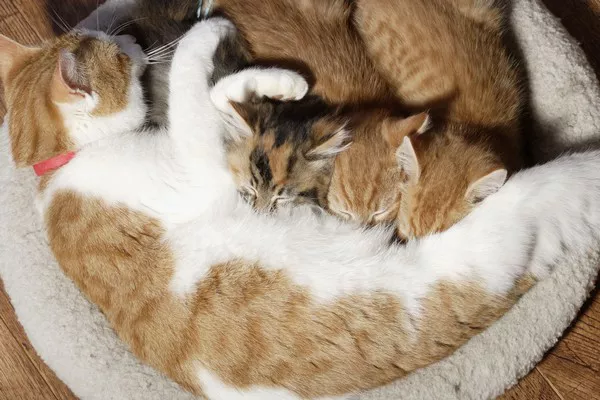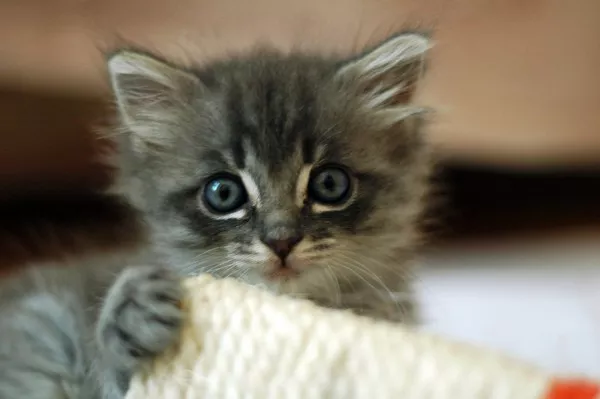When it comes to loyal and dignified canine companions, the Akita stands tall. This majestic breed, originating from Japan, has garnered a reputation for its incredible strength, resilience, and unwavering loyalty.
Akita dogs are known for their impressive lineage and a fascinating history that has contributed to their unique personality. In this article, we’ll delve into the world of Akita dogs, exploring their characteristics, history, and some delightful fun facts. While unraveling the intriguing aspects of this breed, we’ll also answer the crucial question: What are Akita dogs used for?
The Akita’s Noble History
To truly understand the Akita breed, we must first delve into its rich history. These dogs take their name from the Akita Prefecture in northern Japan, where they originated. The history of Akita dogs dates back centuries, with evidence of their existence found as far back as the 17th century. At that time, they were initially bred for a more utilitarian purpose – to hunt large game such as bears, boars, and deer.
This purpose required them to possess a unique combination of strength, agility, and bravery, traits that continue to define the breed today.
What are Akita Dogs Used For?
As mentioned earlier, Akita dogs have historically been used for hunting large game in Japan. Their physical prowess and exceptional courage made them the ideal companions for Japanese hunters, enabling them to tackle formidable creatures in the dense forests of the Akita region. Their thick double coats protected them from the harsh weather, further enhancing their suitability for this challenging task.
However, the utility of Akita dogs extended beyond hunting. They were also used as loyal guard dogs, keeping a watchful eye over their owners’ homes and livestock. This dual role as hunters and protectors shaped the Akita breed’s characteristics, turning them into formidable and dependable companions for the people of the Akita Prefecture.
A Glimpse into the Akita’s Characteristics
Akita dogs are renowned for their striking appearance. They are a large and powerful breed, with a sturdy build that exudes strength and nobility. Their dense double coat, which can come in various colors, serves both functional and aesthetic purposes. It not only provides protection against harsh weather conditions but also contributes to their regal and imposing presence.
One of the most distinct features of Akita dogs is their curled tail, which lies gracefully over their back. This curled tail adds to their majestic demeanor and sets them apart from many other breeds. Their triangular-shaped ears, erect and alert, are another defining characteristic that adds to their overall charm.
In terms of temperament, Akitas are known for their loyalty and protectiveness. They are often reserved and aloof around strangers, making them excellent guard dogs. However, this same loyalty and protectiveness make them fiercely devoted to their families. They can be affectionate and gentle with their loved ones, and their strong bond with their owners is a hallmark of the breed.
What are Akita Dogs Used for Today?
While the original purposes of Akitas included hunting and guarding, their roles have evolved over the years. In modern times, Akitas serve as loyal companions and, often, therapy dogs. Their loving nature and remarkable loyalty make them wonderful pets for those who are willing to invest time and effort into training and socializing them. They are known for forming deep connections with their human families and can be quite affectionate, even if they maintain their dignified demeanor.
Another contemporary role for Akitas is in dog sports and competitions. Their physical prowess and intelligence make them adept at activities such as obedience trials and agility competitions.
These events not only provide an opportunity for Akitas to showcase their skills but also strengthen the bond between the dog and its owner.
Akita’s Notable Pop Culture Presence
Akitas have made a significant mark on popular culture, thanks to their distinct appearance and remarkable characteristics. Perhaps one of the most famous Akitas in the world is Hachiko, an Akita who lived in Japan in the 1920s. Hachiko’s story is both heartwarming and heartbreaking. He is remembered for his remarkable loyalty to his owner, Professor Ueno, who passed away. Hachiko continued to wait for his owner at the Shibuya train station every day for nearly 10 years, a touching display of unwavering devotion. Hachiko’s story has inspired books, movies, and even a bronze statue erected in his honor at Shibuya Station.
Additionally, Akitas have appeared in various films and TV shows, often portrayed as strong and noble characters. Their regal appearance and dignified bearing make them a popular choice for filmmakers looking for a majestic and memorable canine presence.
Akita’s Unique Vocalizations
One of the endearing characteristics of Akitas is their unique vocalizations. While they are not known for being particularly noisy dogs, they do have a distinct set of sounds that they use to communicate with their owners. Akitas are known to “talk” to their humans through a range of grunts, mumbles, and moans, which can be quite amusing to witness. These vocalizations are often accompanied by expressive facial expressions, making it seem as though Akitas are truly trying to convey their thoughts and feelings.
The Akita’s Role in Times of Crisis
Beyond being faithful companions, Akitas have demonstrated their courage and resilience in the face of adversity. Their protective instincts and bravery have led them to play roles in disaster response and search and rescue missions. Akitas have been employed in various natural disasters, including earthquakes and floods, to help locate and rescue individuals in need. Their strength and determination make them well-suited for these demanding tasks.
The Akita’s Connection with Japanese Royalty
Akitas have a long-standing connection with Japanese royalty and nobility. In ancient Japan, it was customary for an Akita to be given as a gift to signify good luck, good health, and a long life. This tradition was particularly prominent in the Imperial family, where Akitas held a special place as symbols of prestige and prosperity.
The Akita breed’s association with nobility continued well into the 20th century. Hachiko, the famously loyal Akita, was a favorite of the Japanese Emperor Taisho. This royal connection further cemented the Akita’s status as a symbol of honor and devotion in Japanese culture.
Akita’s Adaptability to Different Environments
What makes Akitas particularly fascinating is their adaptability to different environments and lifestyles. While they were originally bred for the rugged terrain of the Akita Prefecture, they have successfully integrated into households worldwide. Akitas can thrive in both urban and rural settings, provided they receive the necessary exercise and attention. This versatility is a testament to their ability to evolve and adapt to changing circumstances while remaining true to their fundamental nature.
Unique Coat Colors and Markings
Akitas come in a variety of coat colors and markings, which adds to the uniqueness of the breed. The American Akita and the Akita Inu, a Japanese breed, exhibit different color patterns. American Akitas can be found in several colors, including white, pinto, brindle, and sesame.
The Akita Inu, on the other hand, predominantly comes in red, brindle, and white.
One of the most distinctive features of Akitas is their facial mask, a contrasting color pattern on their muzzle that often resembles a mask.
This mask, along with the breed’s expressive eyes and curled tail, contributes to their striking and memorable appearance.
Akita’s Love for Children
Despite their imposing appearance and reputation as guardians, Akitas are often known for their affectionate nature, particularly with children.
When properly socialized from a young age, Akitas can be gentle and patient with kids, forming strong bonds and providing them with unwavering protection. Their loving disposition makes them excellent family dogs, especially in households with responsible and experienced owners who understand the breed’s specific needs.
Akita’s Lifespan and Health
The typical lifespan of an Akita is between 10 to 15 years. As with any breed, Akitas are prone to specific health issues, including hip dysplasia and progressive retinal atrophy. Responsible breeding and regular veterinary care can help mitigate some of these concerns.
Prospective Akita owners should work with reputable breeders who prioritize the health and well-being of their dogs.
In Conclusion
The Akita is an extraordinary breed with a rich history and an array of unique characteristics that make them stand out in the world of dogs.
From their noble lineage and history as hunting and guarding dogs in Japan to their roles as beloved companions, therapy dogs, and even search and rescue heroes, Akitas have proven their versatility and resilience. Their connection to Japanese culture, famous individuals like Hachiko, and their adaptability to various environments make them a truly captivating and endearing breed. Whether you’re a seasoned Akita owner or considering bringing one into your family, these fun facts about Akitas shed light on the many facets of this remarkable breed, illustrating their unwavering loyalty and their enduring place in the hearts of dog lovers around the world.
Related Topics:
Is an Akita a Good Family Dog? 8 First Things To Know
Akita | Dog, Description, Temperament, & Facts
Akita Dog Breed Information & Characteristics


























